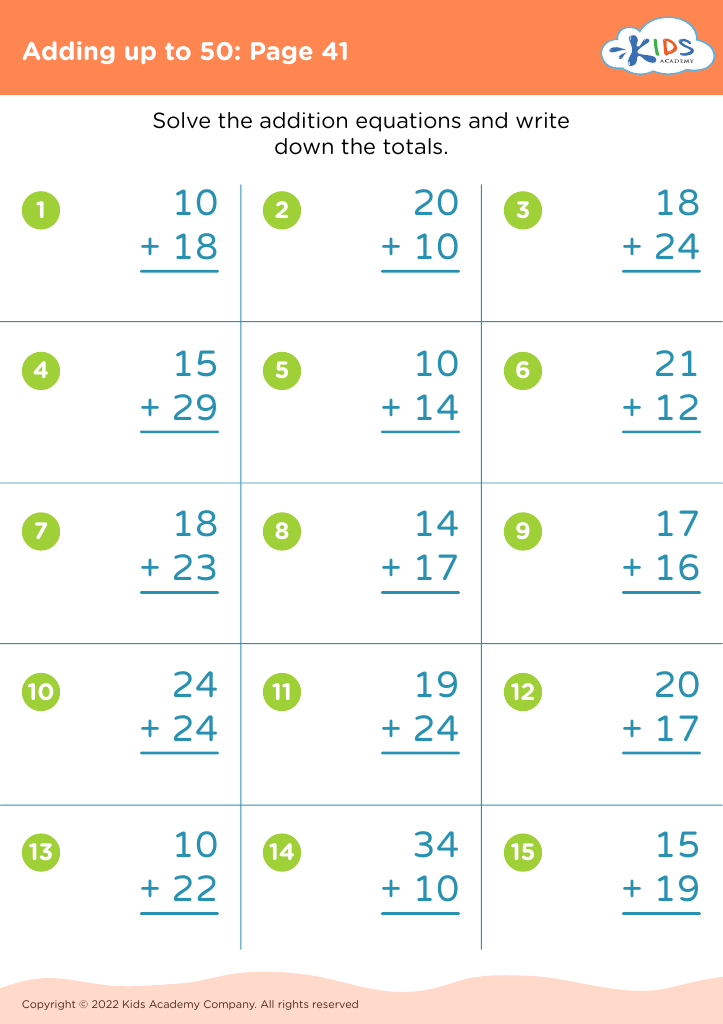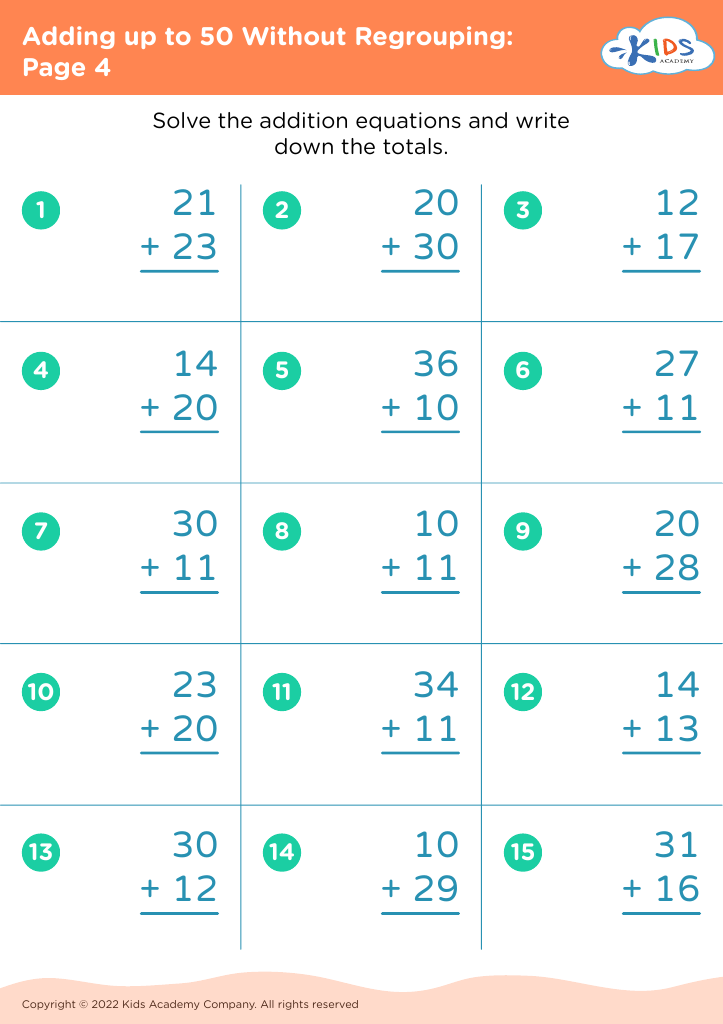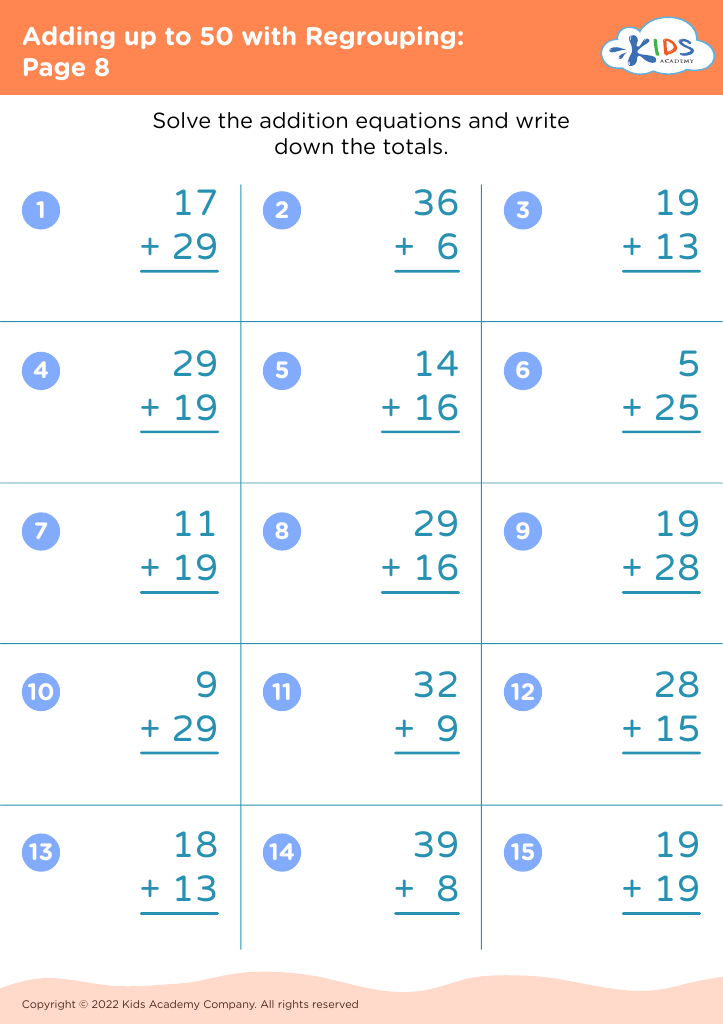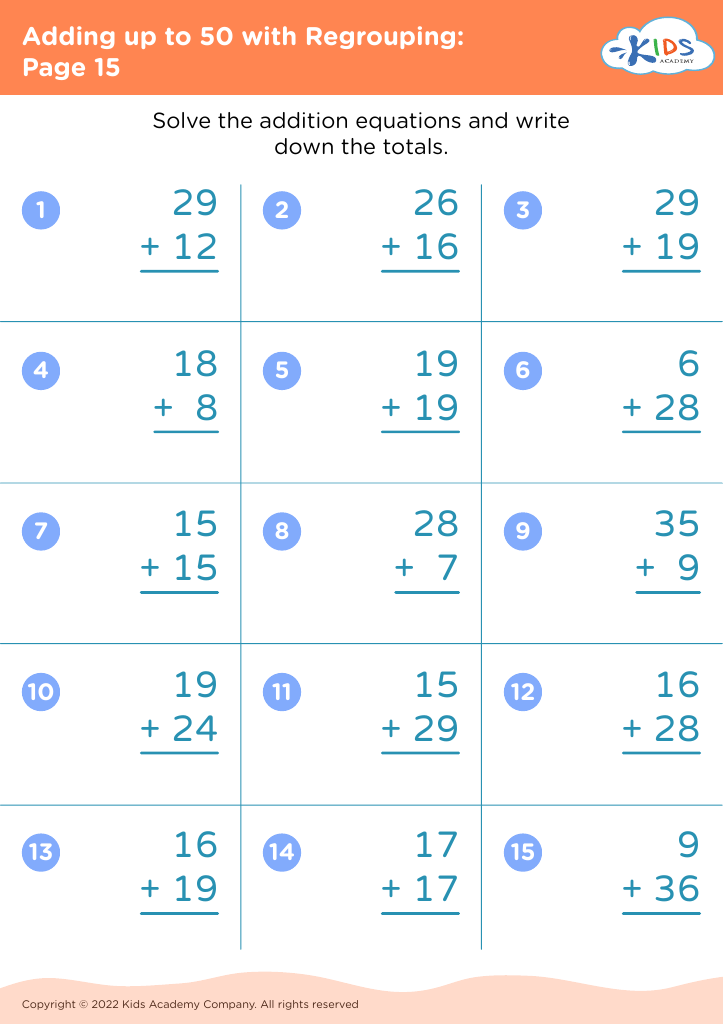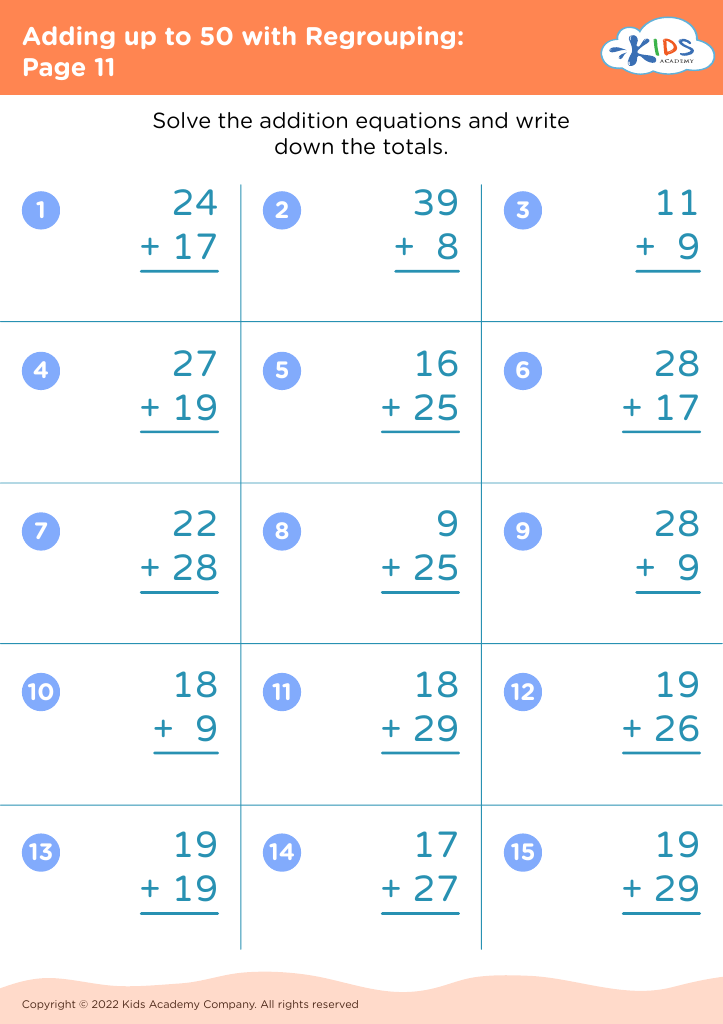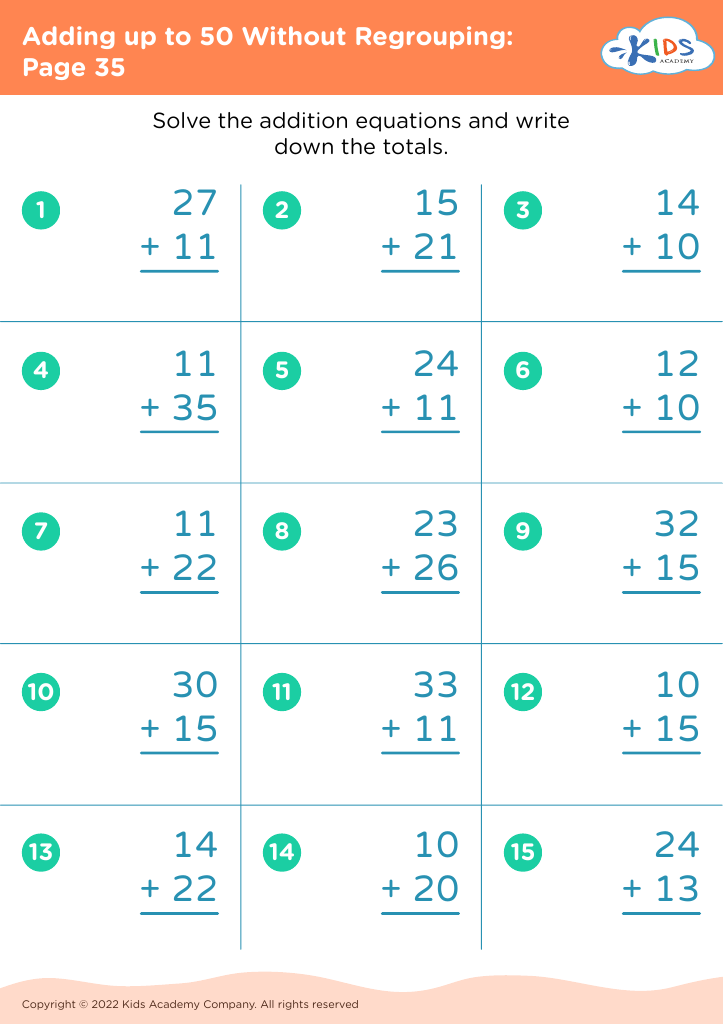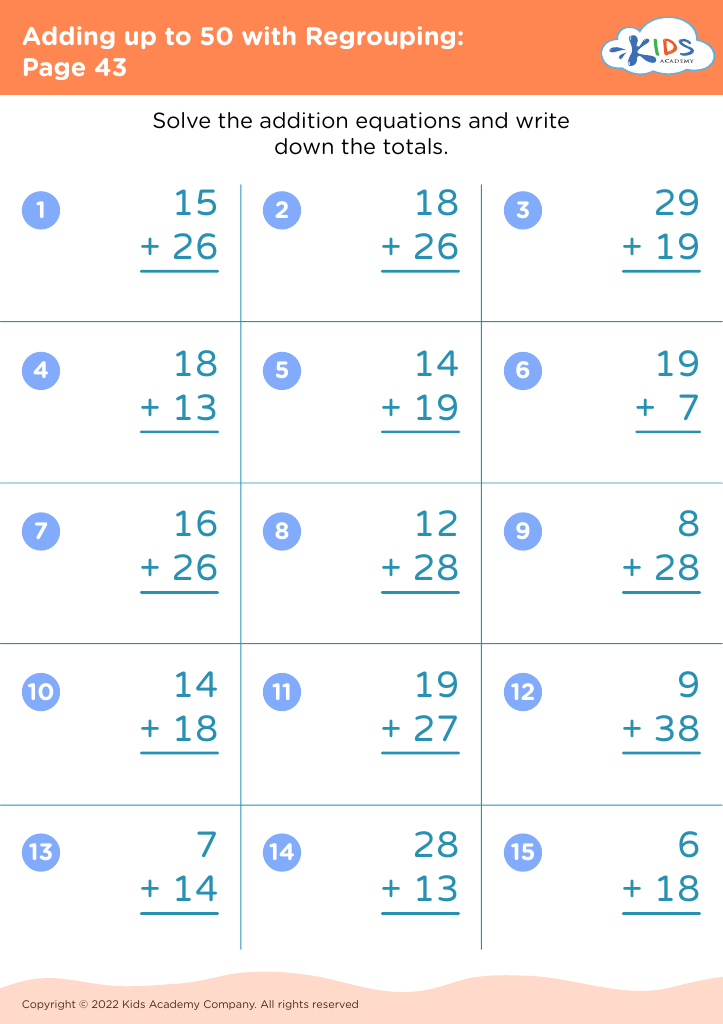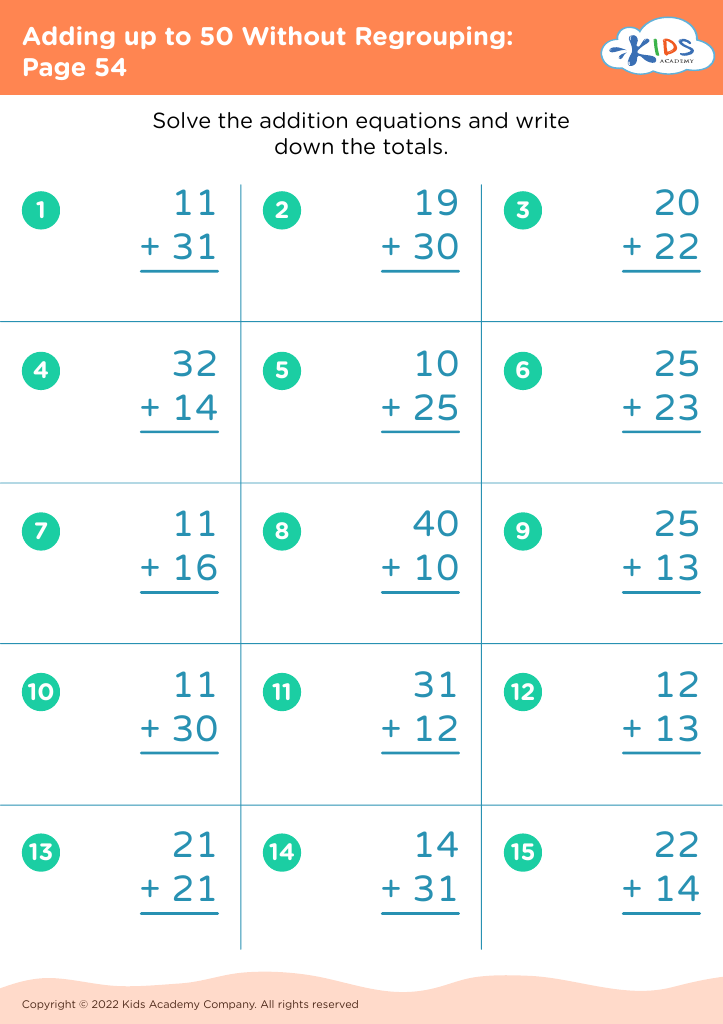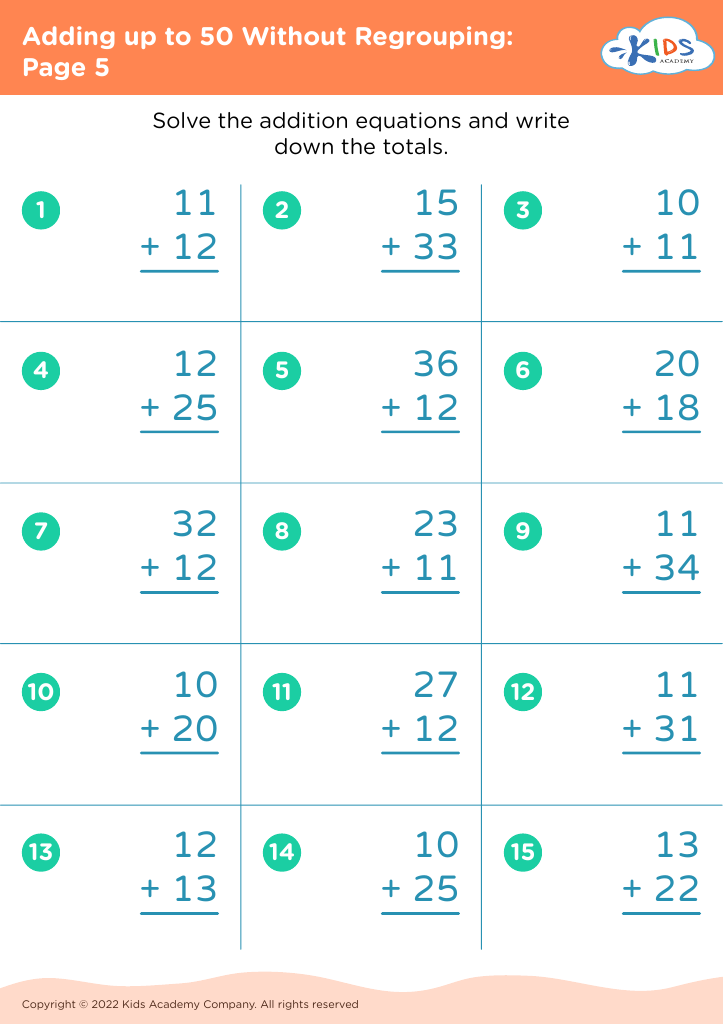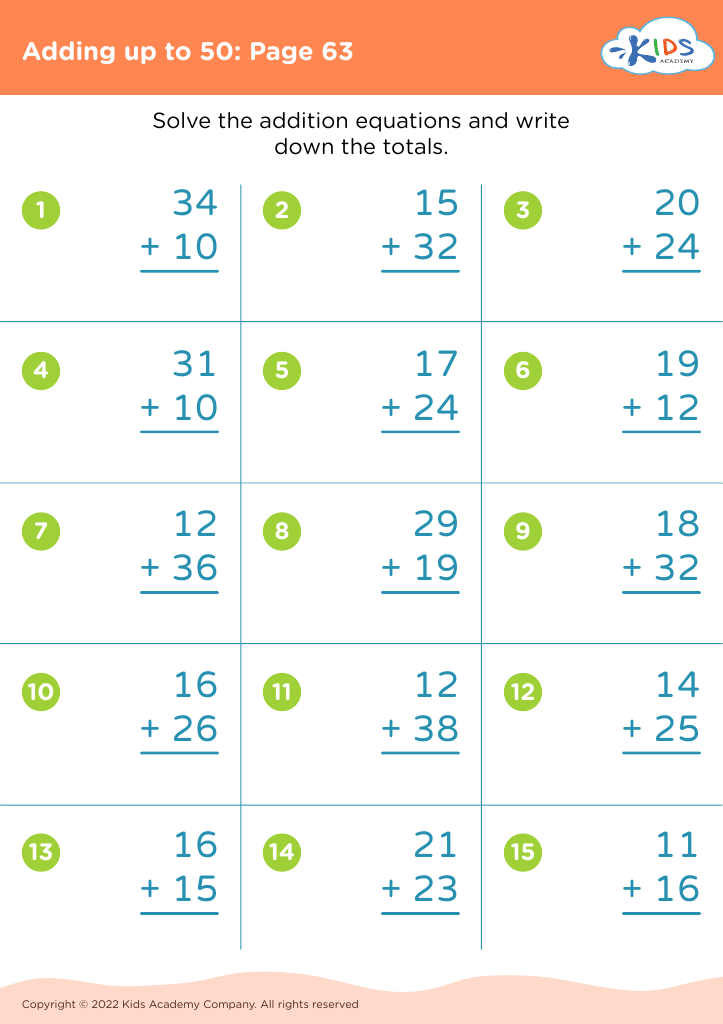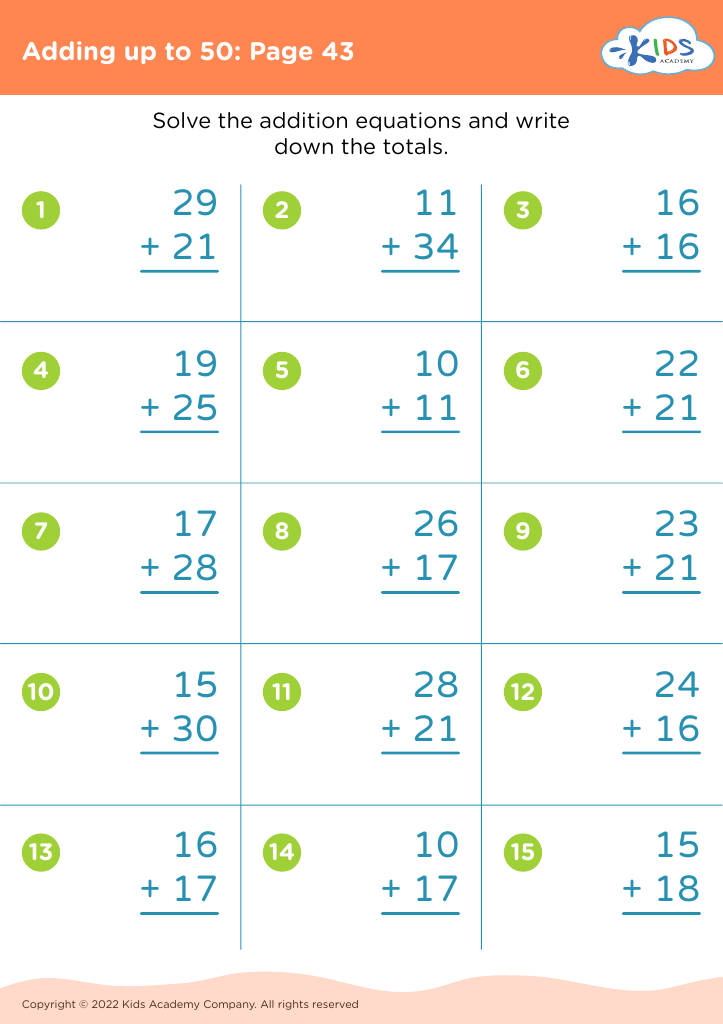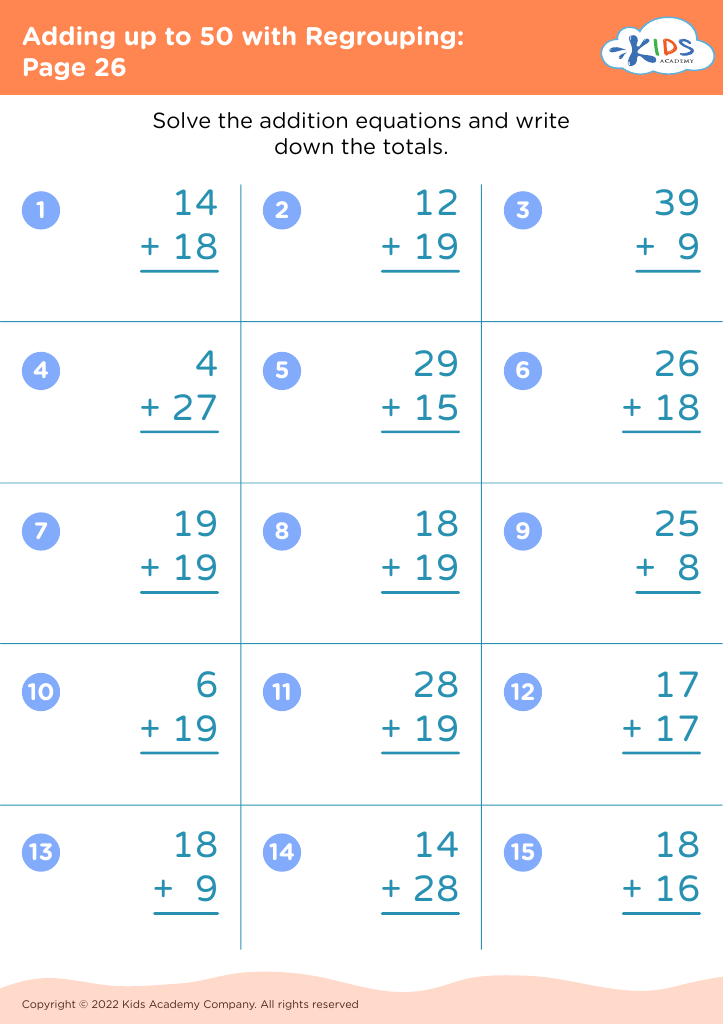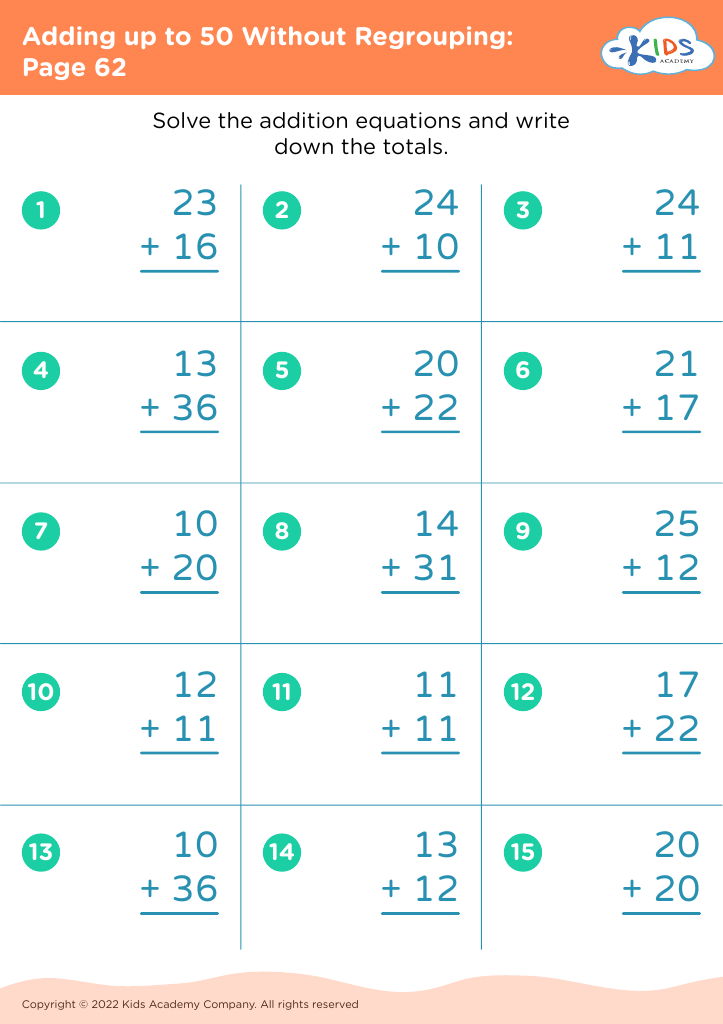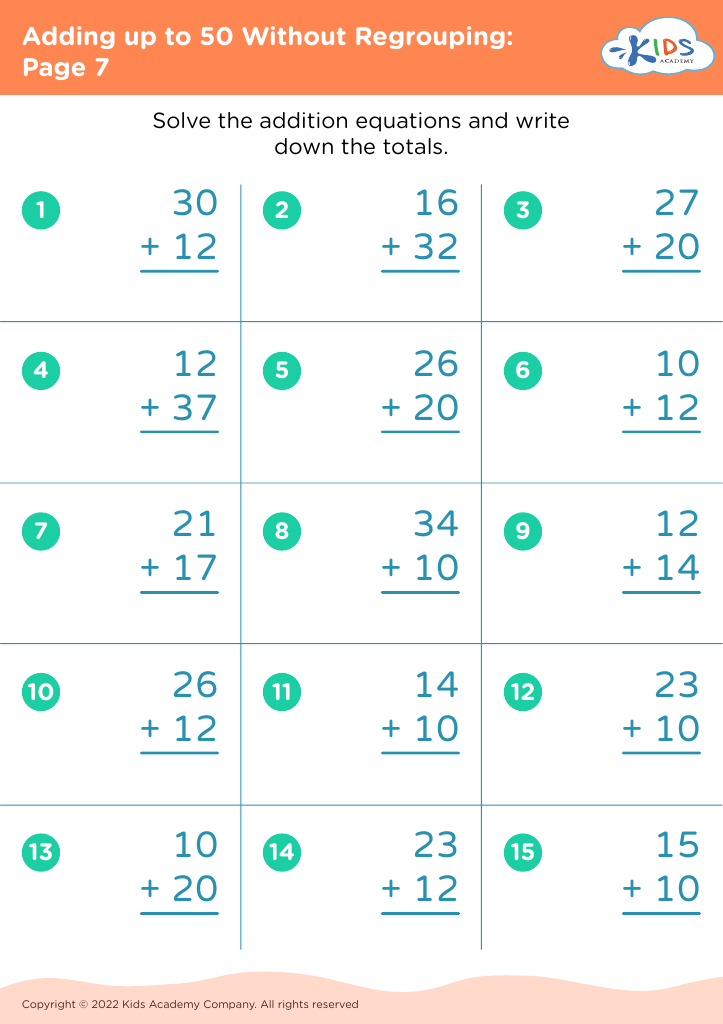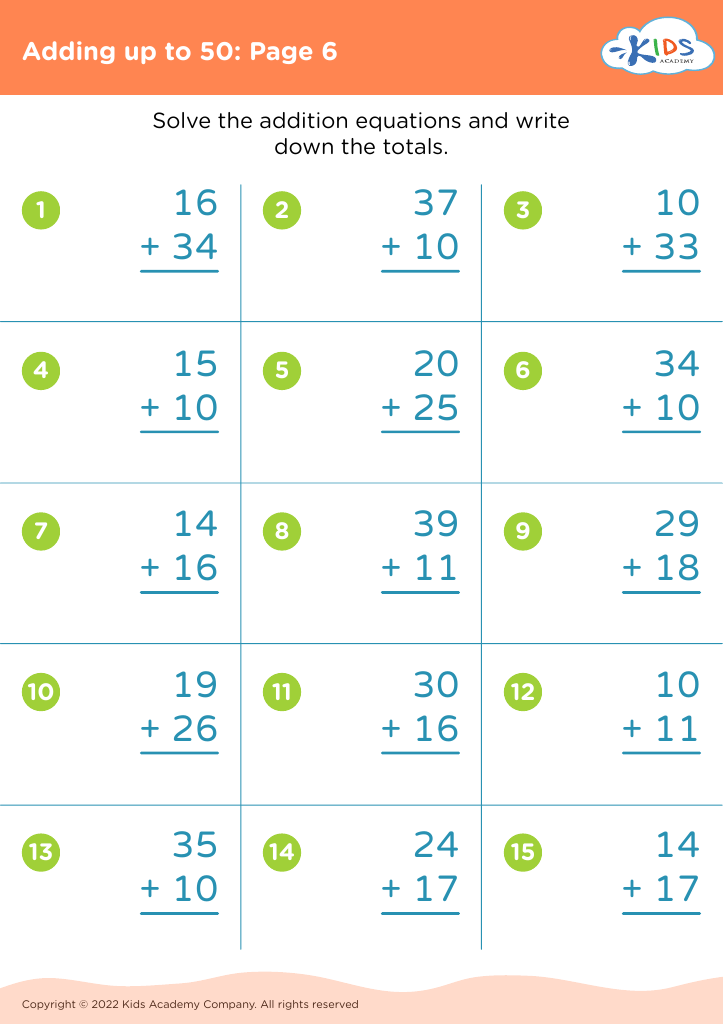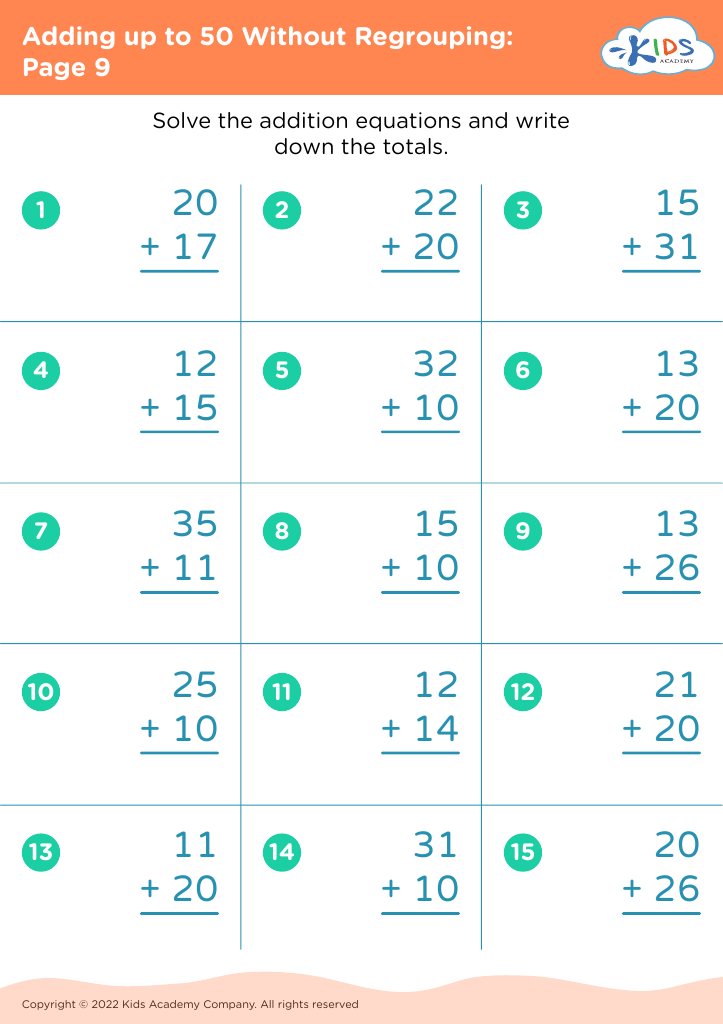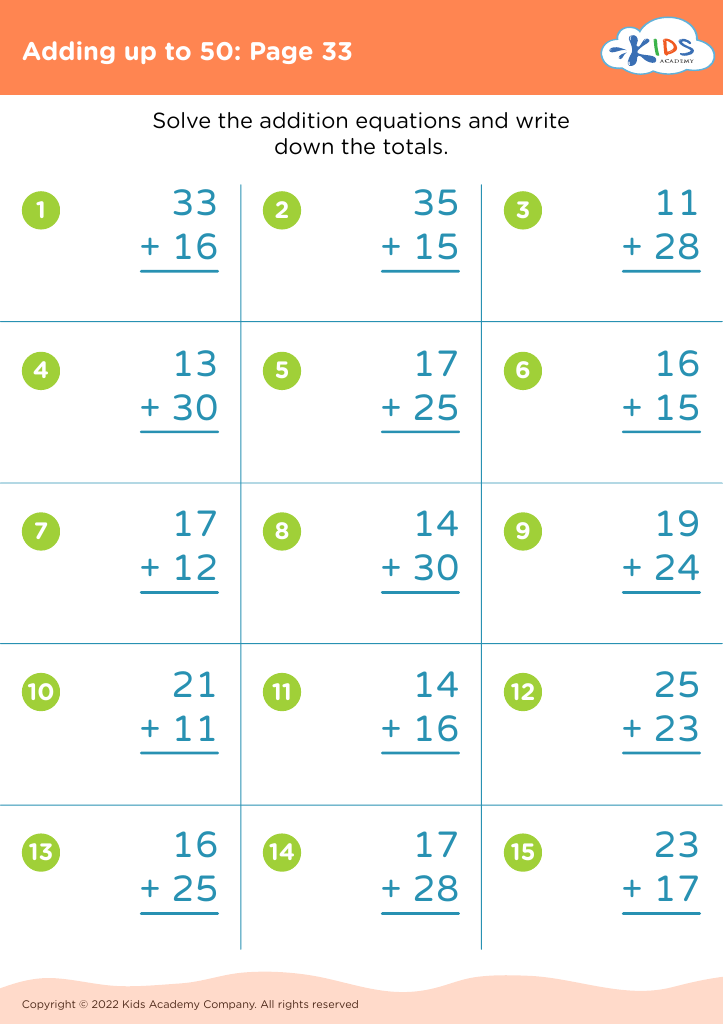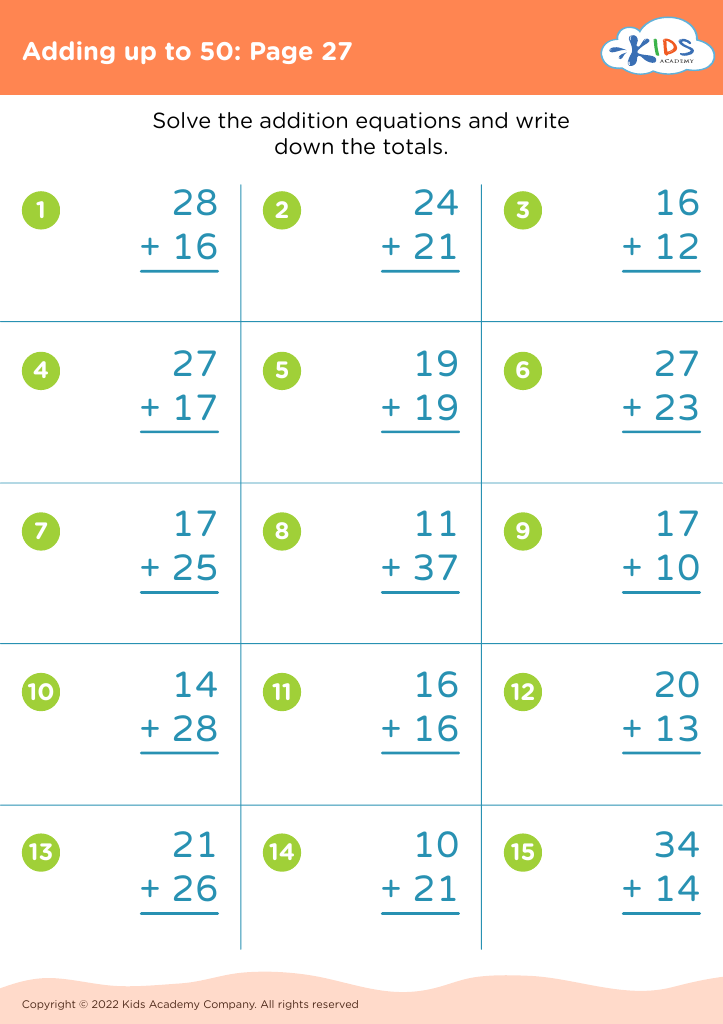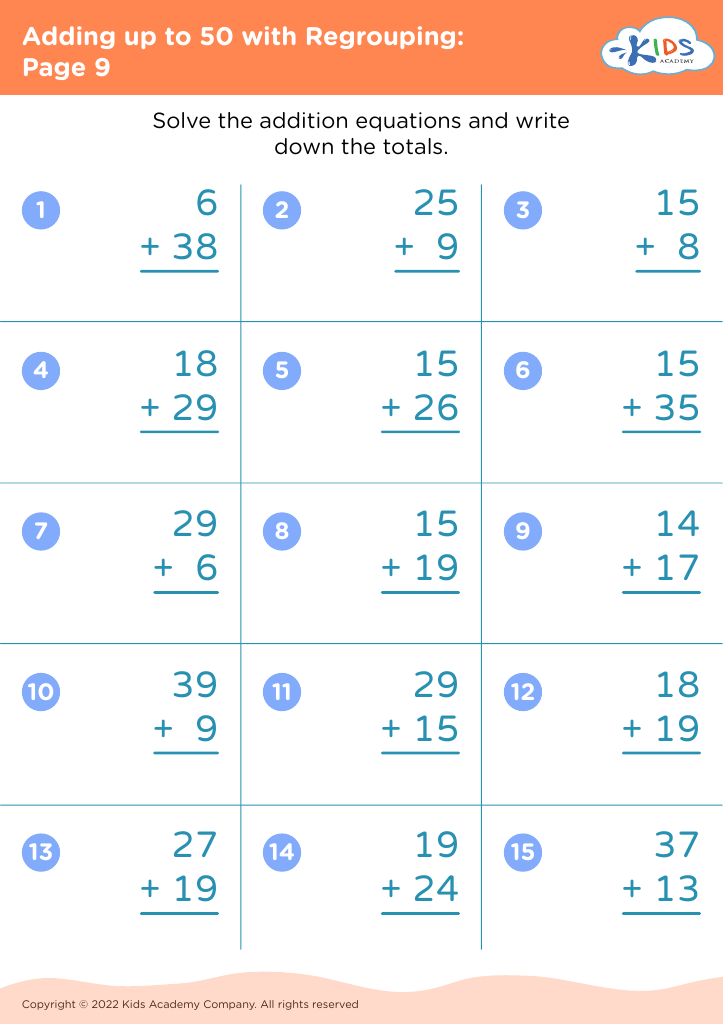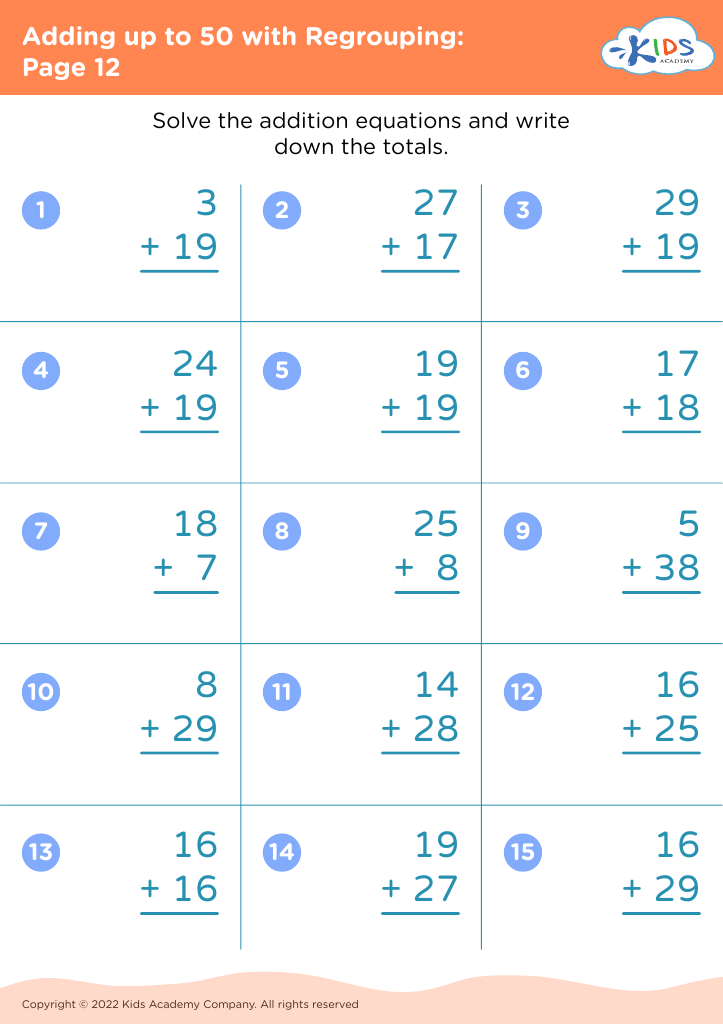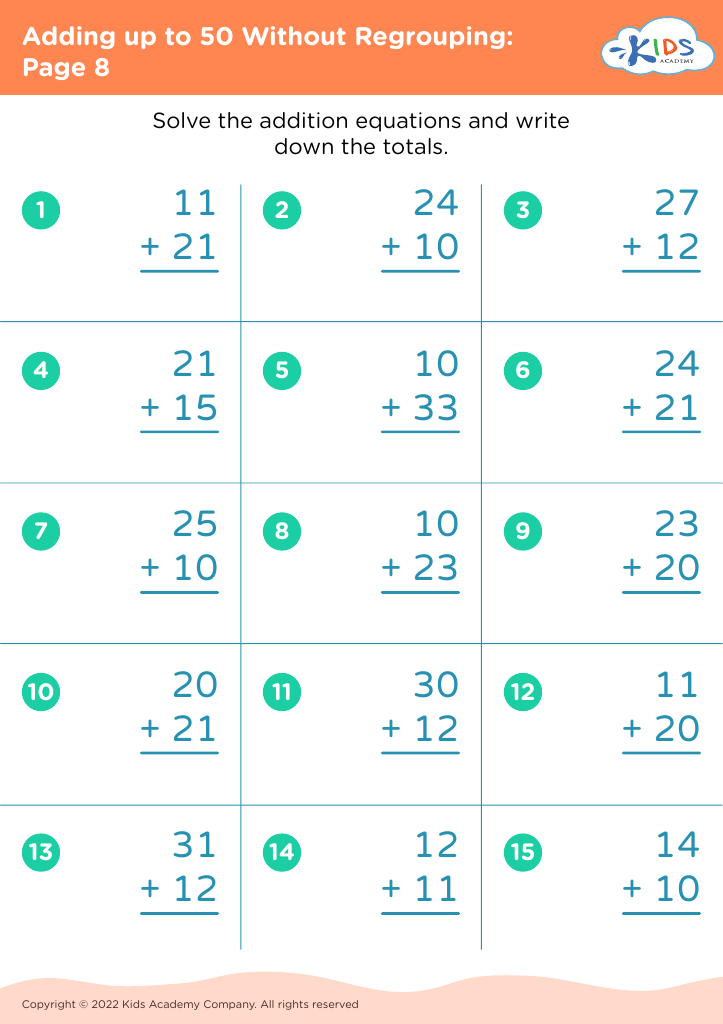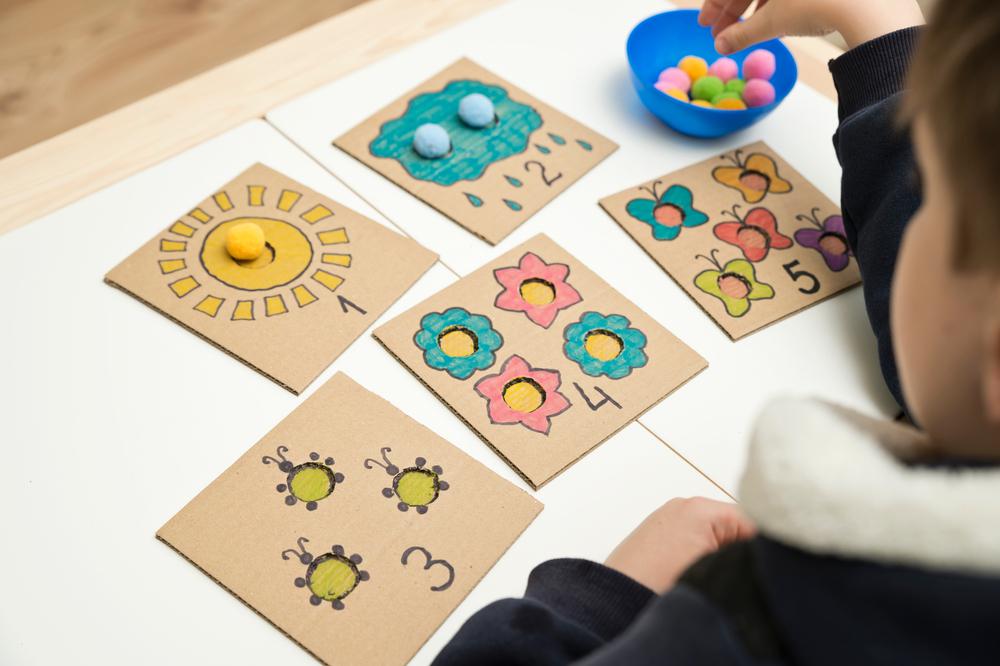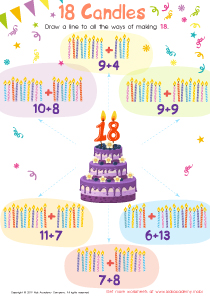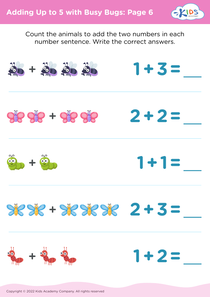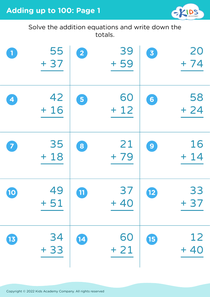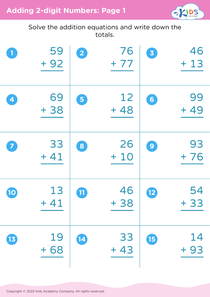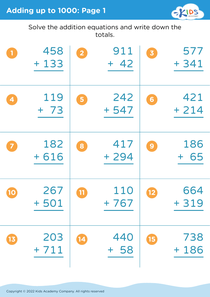Number Recognition Adding up to 50 Worksheets for Ages 8-9
43 filtered results
-
From - To
Explore our engaging "Number Recognition Adding up to 50 Worksheets" designed for students aged 8-9. These worksheets provide a fun and interactive way for young learners to develop their number recognition skills while mastering addition up to 50. Each activity encourages students to recognize numbers, improve their counting abilities, and strengthen their arithmetic skills through a variety of exercises and visual aids. Ideal for both classroom learning and at-home practice, our worksheets are perfect for enhancing mathematical understanding. Help your child build a strong foundation in math with our colorful, captivating, and educational resources tailored just for them!
Number recognition and the ability to add up to 50 are crucial skills for children aged 8 to 9, as they form the foundation for future mathematical learning and everyday problem-solving. At this age, students transition from basic addition to more complex concepts, and number recognition enhances their confidence and understanding of numbers' values and relationships.
Parents and teachers should care about fostering these skills, as strong proficiency in number recognition supports children in tackling more advanced topics, such as multiplication, division, and even fractions, in later grades. It also helps them develop critical thinking skills, enabling them to manipulate numbers fluently and understand mathematical operations.
Moreover, confident number recognition can enhance a child's self-esteem and positive attitude toward math, making them more likely to engage with the subject positively. Early mastery of these skills ensures that students are not left behind and can keep pace with their peers.
Practicing number recognition and addition through games and real-life scenarios can create a fun and engaging learning environment, promoting a love for math that can last a lifetime. Ultimately, investing time and energy in these skills is essential for fostering a child's academic success and overall development.

